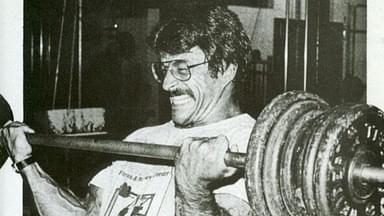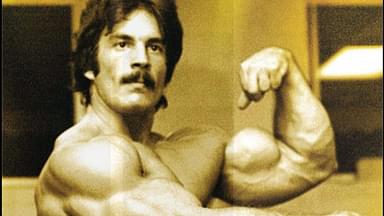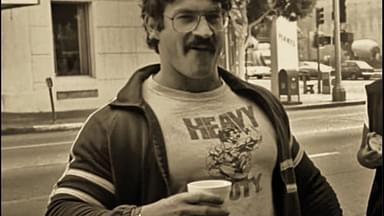In the realm of bodybuilding, there is constant growth and endless study on how to exercise in order to achieve the best physique known to man. However, even though the abundance of guides and literature can seem confusing, there are some icons aspiring bodybuilders can follow blindly. Mike Mentzer is one such example, and recently Heavy Duty College on YouTube uploaded a resurrected audio tape, where the late legend outlined a significant distinction between the two distinct styles of chin-ups.
The exercise is famous among fitness lovers since it works the biceps, lats, and traps of the human body. However, there are two types of chin-ups: close and wide. In the audiotape, Mentzer acknowledges that the workout helps with the aforementioned specifics, but there is a twist to the principles.
The late icon states that for a long time, gym enthusiasts believed that wide-grip chin-ups were the ideal lat workout because they stretched the muscles to their full potential. However, the former Mr. America completely rejected this concept, claiming that wide-grip chin-ups only allow for a 90-degree lat stretch.
He wants his listeners to mentally picture their lats, which are positioned in the lower back of the body, as he says:
“When you go to a wide grip, look what happens to the angle, it’s closer and closer to a 90-degree.”
On the other hand, close-grip chin-ups help one to properly extend their lats up to 180 degrees, providing maximum advantages to the physique.
Mentzer’s tidbits and advice are invaluable for both amateurs and professionals. The icon also had a knack for clearing all doubts in a straightforward manner as he once shared a simple secret to intensive training with his audience.
Mike Mentzer once unveiled the benefits of brief and intense workouts
There are numerous misconceptions about bodybuilding and the process of working out. Mike Mentzer was a HIT pioneer who understood the importance that intensive exercises bring to the table. However, he adds that these exercises should be performed correctly until failure, in a short period of time, rather than stretching out a workout session for hours.
Mentzer contrasts this rigorous training with track and field, noting that at the Olympics, the maximum sprinting distance is 400 meters rather than 800 meters. He wants to explain to his followers that training for merciless numbers of hours every day is simply putting too much strain on the body and that better results may be obtained with less time but adequate exercise.





